Dairy farming is an important aspect of the agricultural industry, and it is vital to maintain a high feed conversion ratio to ensure efficiency. Improving the FCR in dairy farming is key to the business’s success. Following these rules can help improve this ratio and ensure you use your resources efficiently. Make sure that you keep track of your herd’s nutrient intake, provide access to clean water, give them an appropriate diet for their age, monitor any health issues or changes in behavior, and test feed samples regularly.
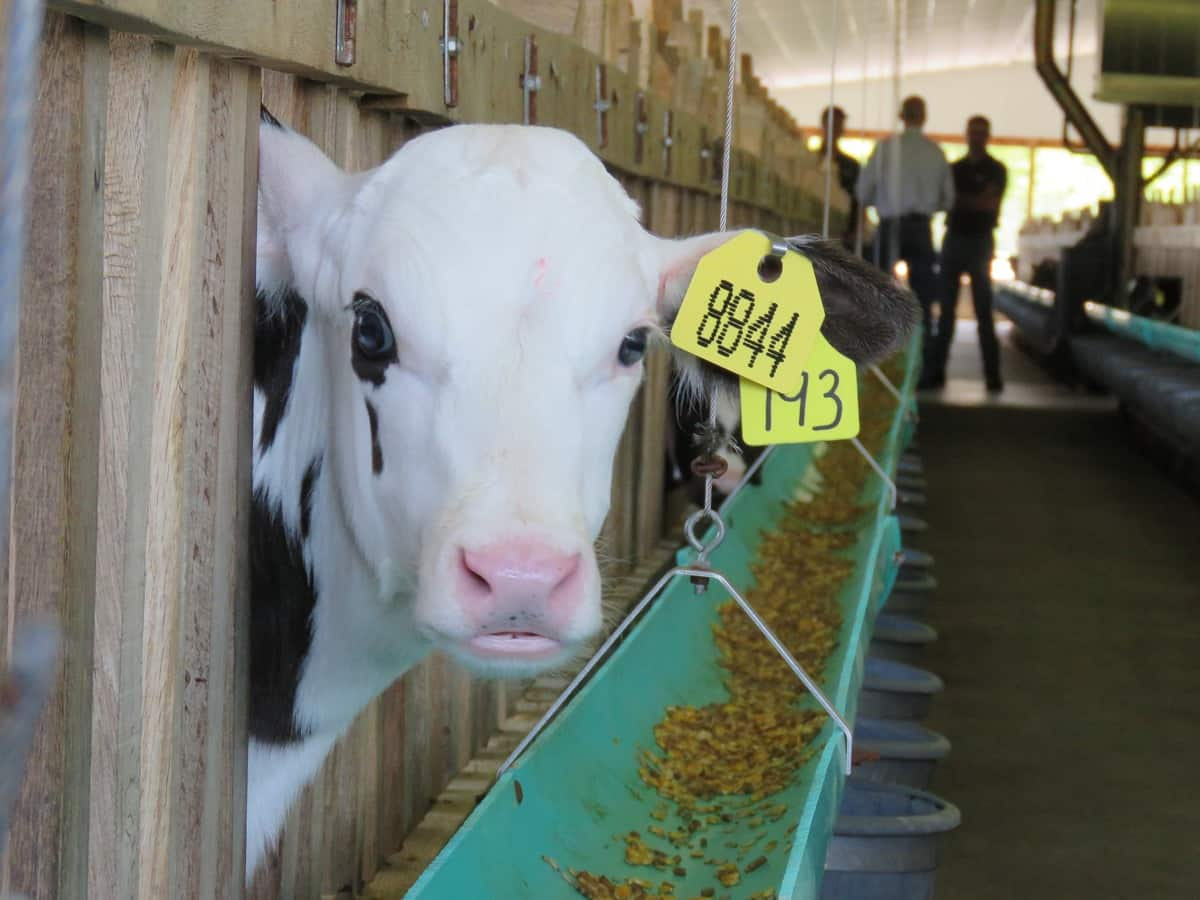
Key rules to improve Feed Conversion Ratio (FCR) in dairy animals
What is the Feed Conversion Ratio (FCR)?
The Feed Conversion Ratio (FCR) is a key metric for dairy farmers to track and optimize. Simply put, it is the ratio of how much feed an animal eats versus how much weight they gain. A higher FCR means that an animal is converting more of their feed into body weight and is, therefore, more efficient. A feed conversion ratio (FCR) is a key indicator of dairy herd productivity and profitability.
Simply put, it measures how efficiently an animal converts feed into milk or meat. A low FCR indicates efficient feed utilization and is desirable, while a high FCR indicates poorer feed utilization and is less desirable. Several factors can influence an animal’s FCR, including age, breed, health status, activity level, and feed type. In general, younger animals have better FCRs than older animals, and cows fed high-quality forages have better FCRs than those fed concentrates.
Why are FCRs important to farmers?
The Feed Conversion Ratio (FCR) is an important metric for dairy farmers because it directly impacts their profitability. A higher FCR means that a greater proportion of the feed is converted into milk, resulting in lower production costs. In addition, a higher FCR also indicates that the cows are healthier and produce more milk.
There are several ways to improve the FCR on a dairy farm. One way is to focus on providing high-quality feed rich in nutrients. Another way is to ensure that the cows have access to fresh water at all times and that they are not overstressed. Finally, good management practices, such as maintaining cleanliness in the barn and using data to track progress, can also help improve the FCR.
In case you missed it: 19 Key Rules for Effective Dairy Farm Management: From Planning to Reduce Production Cost
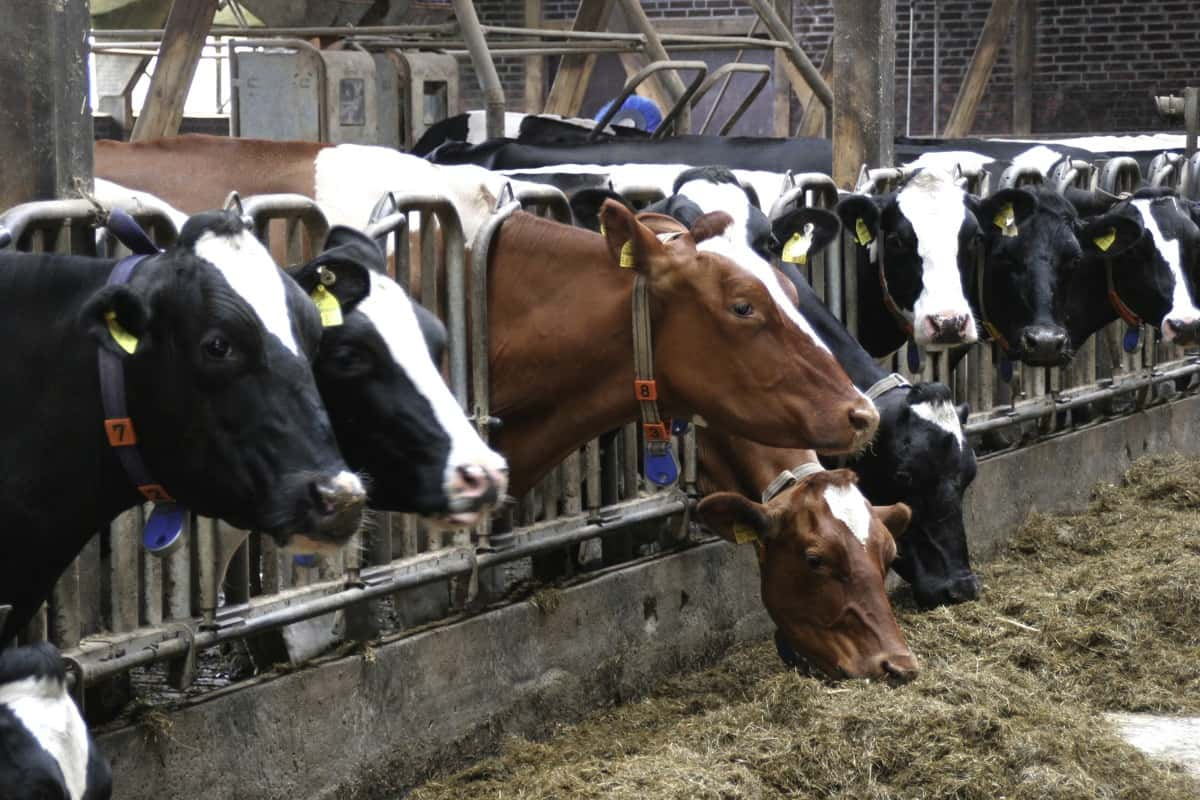
Important rules to improve FCR in dairy animals
- Provide a balanced diet that meets their nutritional needs. Provide your cows with a high-quality diet tailored to their specific nutritional needs. A well-balanced diet will help cows maintain their health and maximize their milk production.
- Keep them free from disease and parasites.
- Keep them comfortable and stress-free – provide ample space, good ventilation, and clean bedding.
- Monitor your animals regularly and keep detailed records so you can identify any potential problems early on.
- Make sure your cows have access to clean, fresh water. Cows that are dehydrated produce less milk and are more susceptible to disease.
- Keep your barns and milking facilities clean and well-maintained. Bacteria can build up in dirty environments, reducing milk production and increasing disease risk.
- Make sure your cattle are well-fed and have access to plenty of fresh water.
- Use quality feeds that are properly balanced for the needs of your cattle.
- Avoid overfeeding or underfeeding your cattle, as this can impact FCR negatively.
- Keep housing and pens clean and free of excessive dirt and manure to reduce the risk of infection and disease.
- Provide adequate ventilation in all housing and pens to avoid humid conditions that can lead to illness.
- Practice good hygiene when handling milk and milk products to prevent contamination.
- Store feed properly to maintain quality and prevent spoilage or waste.
- Keep accurate records of all feeding, including the type of feed, amount, date, and duration fed.
In case you missed it: How to Start Dairy Farming From Scratch: A Complete Guide for Beginners
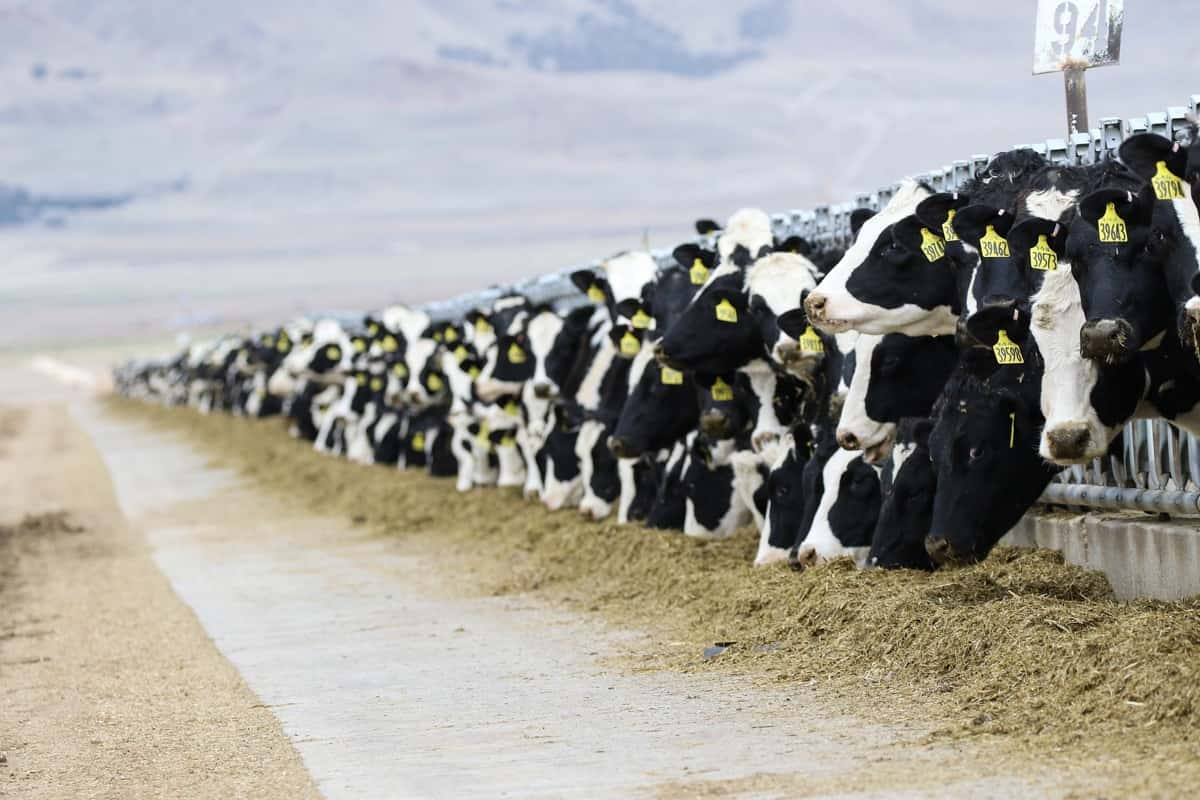
Different ways to increase feed conversion ratio in dairy farming
- One of the most important ways is to ensure that your cattle are properly fed and have access to high-quality feed. This means feeding them a balanced diet with all the necessary nutrients and providing them with plenty of fresh water.
- Another key way to improve your feed conversion ratio is to reduce wastage. This can be done by minimizing spillage and ensuring that cattle have access to clean water. You should also regularly check for mold or spoilage in your feed and remove any contaminated feed from your cattle’s diet.
- Proper nutrition is essential for cows to maintain their body condition and produce quality milk. A well-balanced diet helps the cows to utilize the nutrients from their feed more efficiently and results in better FCR.
- Good management practices such as providing clean and comfortable housing, maintaining a regular milking schedule, and reducing stress levels can also help to improve FCR.
- The use of technology and data analytics can also play a role in improving FCR. For example, farmers can use precision farming techniques to optimize their feeding and management practices based on data collected from individual cows. This helps ensure that each cow receives the right amount of nutrients and reduces wastage, resulting in improved overall FCR.
- Finally, monitoring your cattle’s weight and body condition score is also important. If you notice that they are losing weight or their body condition score is deteriorating, it may indicate that they are not getting enough nutrients from their diet. By increasing the amount or quality of feed you provide, you can help to improve your cattle’s overall health and your farm’s feed conversion ratio.
The benefits of improved FCR in dairy farming
The first and foremost benefit of improved FCR is reduced cost of production. With improved FCR, dairy farmers can save on feed costs while still providing their animals with the necessary nutrients. In addition, improved FCR can also lead to increased milk production. This is because cows that can convert feed more efficiently produce more milk. Finally, another benefit of improved FCR is healthier cows.
Cows with a better feed conversion rate tend to be healthier overall, leading to fewer health problems and less time spent on treatments and vet bills. The feed conversion ratio is a key factor in the success of any dairy farming operation. By focusing on factors such as diet, genetics, health status, and environmental management, farmers can improve their FCR and thus reduce costs while increasing overall profits.
In case you missed it: How to Start Pig Farming in Israel: Breeds, Business Plan, Key Rules, Setup Cost, and Profit
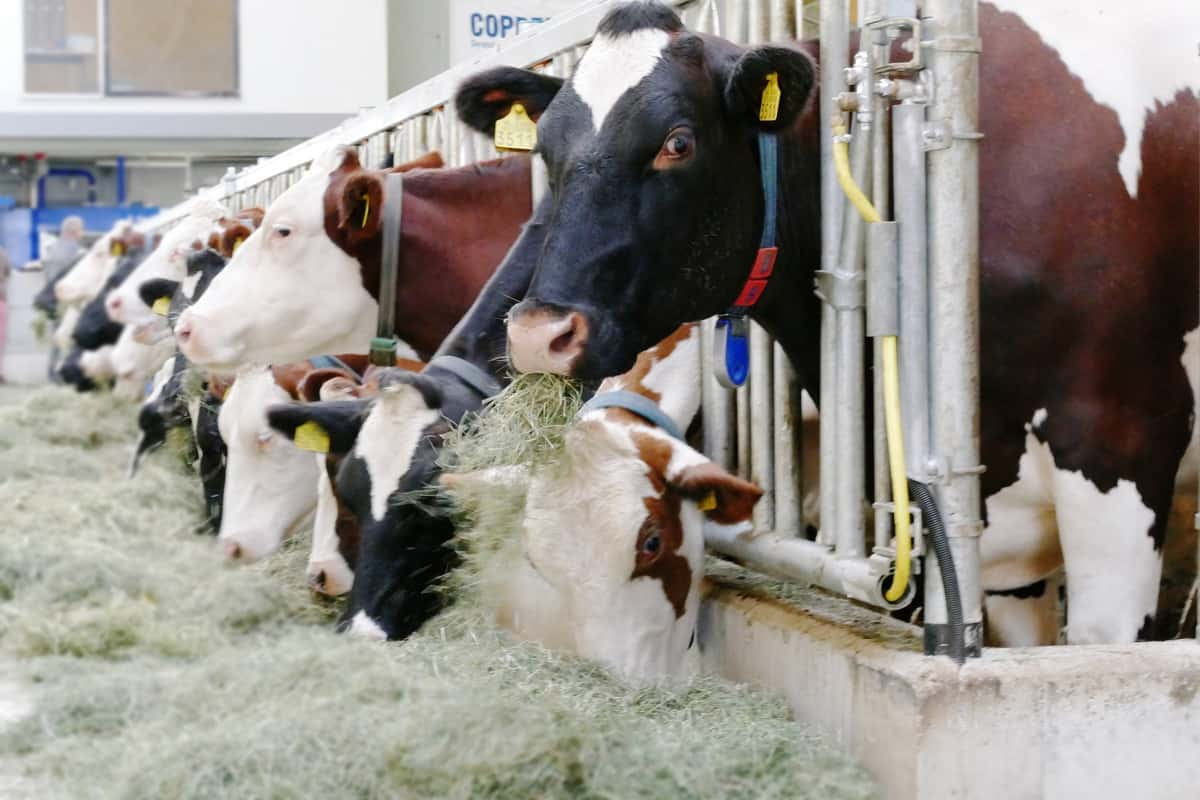
In addition to these considerations, farmers must pay attention to changes in market conditions, so they can make timely adjustments when needed. With careful planning and an eye for detail, dairy farmers can ensure their operations remain competitive and lucrative for many years.
The ideal FCR for dairy cattle
The ideal FCR for dairy cattle is about 6:1. This means that for every 6 pounds of feed a cow eats, she should produce 1 pound of milk. This ratio is important because it helps farmers know how much feed to give their cows to produce the desired milk. Several factors can influence a cow’s FCR, such as age, breed, and feed quality.
Key husbandry practices to improve your dairy farm’s FCR
1. Provision of clean and fresh water: Dairy animals require a lot of water for metabolism, detoxification, and excretion of waste products. Water also helps in the digestion and absorption of nutrients from feeds. Therefore, it is important to ensure that dairy cows have access to clean and fresh water at all times. This can be achieved by providing clean water troughs and regularly cleaning them.
2. Adequate nutrition: A balanced diet is essential for optimal health and productivity in dairy cows. Nutrients such as proteins, carbohydrates, fats, vitamins, and minerals are required for various body functions. The right mix of these nutrients will help improve the FCR in dairy cows.
3. Manage your herd’s genetic potential FCR: The first step to take in managing your herd’s FCR is to understand the genetic potential of your animals. This will help you identify which cows are more likely to produce high-quality milk and which may be more prone to illness or poor milk production. By selecting a breeding stock that has a high genetic potential for FCR, you can help ensure that your herd produces milk that is high in quality and quantity.
4. Proper housing: Housing plays an important role in the health and productivity of dairy cows. Cows kept in cramped and dirty conditions are more susceptible to diseases which can lead to poor appetite and reduced milk production. Therefore, good housing facilities with ample space, good ventilation, and comfortable bedding will help improve the FCR in dairy cows.
In case you missed it: Indigenous Veld Goat Farming in Africa: How to Start, Business Plan for Rasing to Care
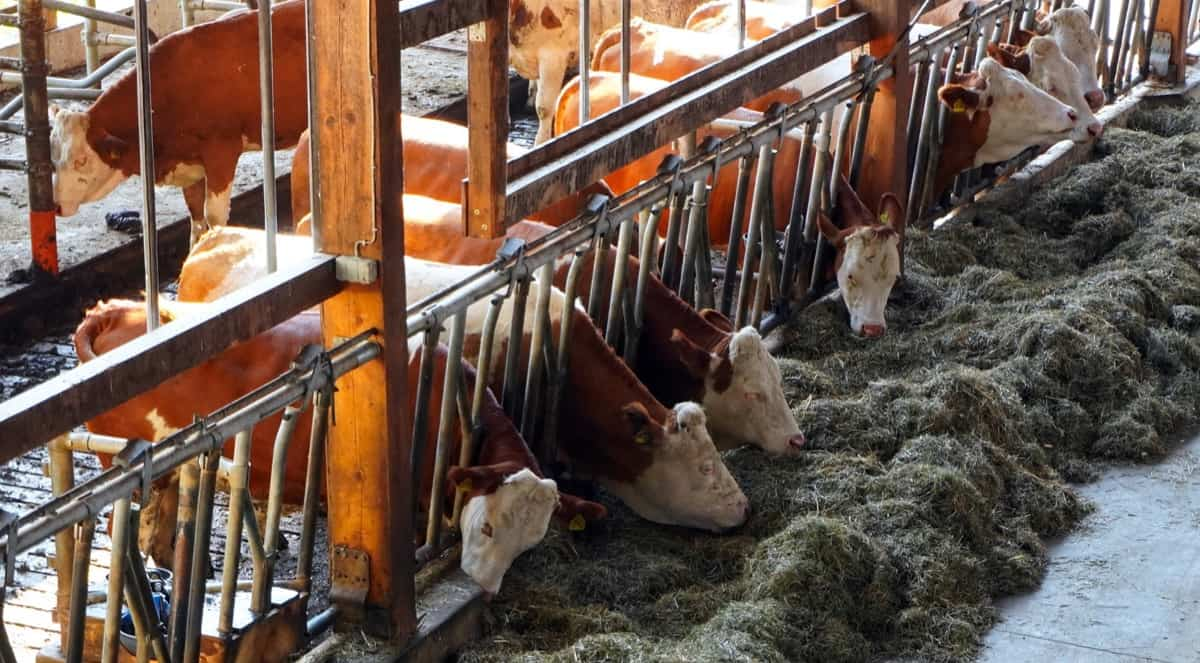
5. Health management: Disease prevention is another important husbandry practice that can help improve the FCR in dairy cows. Common diseases that affect dairy cows include mastitis, metritis, pneumonia, etc. Vaccination against these diseases and prompt treatment of sick animals can help reduce mortality rates and increase milk production, thereby improving FCR.
How do you calculate Feed Conversion Ratio in dairy cows?
To calculate FCR in dairy cows, you must first determine the daily feed required. This can be done using a feed chart or taking your herd’s average daily dry matter intake. Once you have determined the dry matter intake, you will need to divide this by the daily milk production. This will give you your FCR.
It’s important to keep track of an animal’s FCR over time because it can indicate how well the animal is doing on its current diet and whether or not changes need to be made. For example, if an animal’s FCR starts to increase, it may be a sign that it is not getting enough nutrients from its food and changes need to be made.
It is important to note that FCR can vary based on the feed being fed to the cows. For instance, high-quality feeds such as alfalfa hay can result in a lower FCR than lower-quality feeds such as corn silage. In addition, the fat content of the milk can also affect FCR. Higher-fat milk will typically have a higher FCR than skim milk.
Tips for maintaining a good FCR
1. Keep track of your feed conversion ratio (FCR). This is the most important step in maintaining a good FCR. Knowing your current FCR will help you determine if changes you make to your feeding program are resulting in improvements.
2. Make sure you are providing a balanced diet for your cows. A well-balanced diet will help cows digest their feed more efficiently and convert more of it into milk and body tissue.
3. Avoid overfeeding or underfeeding your cows. Both can lead to lower FCRs. However, overfeeding can also result in health problems for your cows, so it’s important to find the right balance.
4. Pay attention to the quality of the feed you are providing. The better the quality, the easier it will be for cows to digest and use the nutrients in the feed.
5. Keep your cows healthy. Cows that are sick or stressed are less efficient at converting feed into milk and body tissue. Therefore, you must do everything possible to keep your cows healthy and stress-free. Cows that are unhealthy or unhappy are less likely to produce quality milk. Therefore, keeping your cows healthy and happy is important by providing them with a clean and comfortable environment, a nutritious diet, and access to fresh water. Additionally, you should provide your cows with regular health check-ups and vaccinations to prevent them from becoming sick.
In case you missed it: How to Make Corn Silage: Production and Management Steps for Goats, Sheep, Cows, Pigs, and Cattle
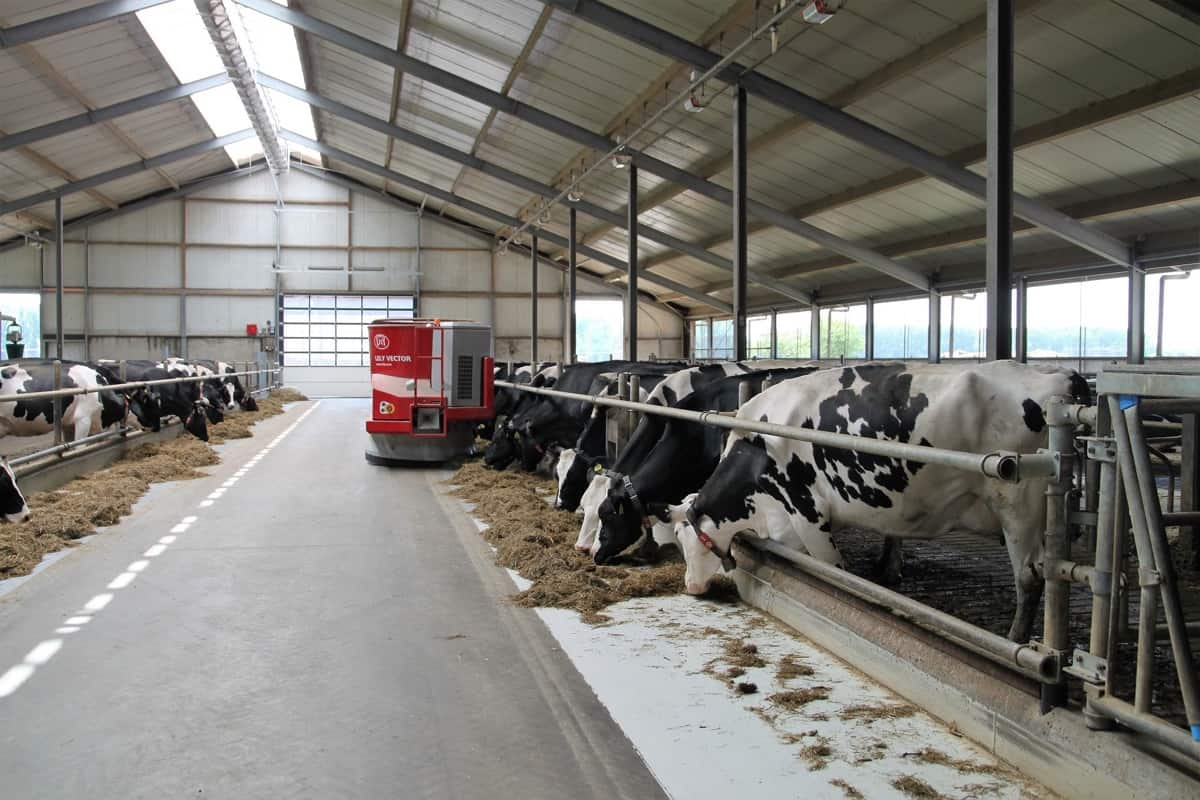
6. Ensure that cows have access to plenty of high-quality forage to consume the maximum amount of dry matter possible. This will help them maintain their body condition and produce more milk. Also, make sure that all of the feeds which are being given to cattle are being consumed and not wasted.
7. Internal parasites can lead to poor FCR, so it is important to keep them under control through regular deworming programs. In addition, keep a close eye on feed conversion ratios so any problems can be identified and rectified quickly.
Conclusion
Dairy farming is an ever-evolving industry with an important focus on the well-being of animals and the production of high-quality milk. Feed conversion ratio (FCR) is a key measure of how efficiently livestock can convert feed into milk and meat. As such, dairy farmers need to understand how to optimize their FCR to maximize production while minimizing costs.
- Types of Pesticides Used in Agriculture: A Beginner’s Guide
- Economical Aquaculture: A Guide to Low-Budget Fish Farming
- 15 Common Planting Errors That Can Doom Your Fruit Trees
- How to Make Houseplants Bushy: Effective Tips and Ideas
- Innovative Strategies for Boosting Coconut Pollination and Yield
- Pollination Strategies for Maximum Pumpkin Yield
- The Complete Guide to Chicken Fattening: Strategies for Maximum Growth
- Natural Solutions for Tulip Problems: 100% Effective Remedies for Leaf and Bulb-Related Issues
- Revolutionizing Citrus Preservation: Towards a Healthier, Greener Future
- Natural Solutions for Peony Leaf and Flower Problems: 100% Effective Remedies
- Maximizing Profits with Avocado Contract Farming in India: A Comprehensive Guide
- Natural Solutions for Hydrangea Problems: 100% Effective Remedies for Leaf and Flowers
- The Ultimate Guide to Choosing the Perfect Foliage Friend: Bringing Life Indoors
- From Sunlight to Sustainability: 15 Ways to Use Solar Technology in Agriculture
- The Ultimate Guide to Dong Tao Chicken: Exploring from History to Raising
- The Eco-Friendly Makeover: How to Convert Your Unused Swimming Pool into a Fish Pond
- Mastering the Art of Delaware Chicken Farming: Essentials for Healthy Backyard Flocks
- 20 Best Homemade Fertilizers for Money Plant: DIY Recipes and Application Methods
- How to Craft a Comprehensive Free-Range Chicken Farming Business Plan
- Brighten Your Flock: Raising Easter Egger Chickens for Beauty and Bounty
- How to Optimize Your Poultry Egg Farm Business Plan with These Strategies
- Subsidy for Spirulina Cultivation: How Indian Government Schemes Encouraging Spirulina Farmers
- Ultimate Guide to Raising Dominique Chickens: Breeding, Feeding, Egg-Production, and Care
- Mastering the Art of Raising Jersey Giant Chickens: Care, Feeding, and More
- Ultimate Guide to Raising Legbar Chickens: Breeding, Farming Practices, Diet, Egg-Production
- How to Raise Welsummer Chickens: A Comprehensive Guide for Beginners
- How to Protect Indoor Plants in Winter: A Comprehensive Guide
- Ultimate Guide to Grow Bag Gardening: Tips, Tricks, and Planting Ideas for Urban Gardeners
- Guide to Lotus Cultivation: How to Propagate, Plant, Grow, Care, Cost, and Profit
- Agriculture Drone Subsidy Scheme: Government Kisan Subsidy, License, and How to Apply Online
- Ultimate Guide to Raising Araucana Chickens: Breed Profile, Farming Economics, Diet, and Care
- Bringing Hydroponics to Classroom: Importance, Benefits of Learning for School Students
- Ultimate Guide to Raising Polish Chickens: Breed Profile, Farming Economics, Diet, and Care
- Ultimate Guide to Raising Australorp Chickens: Profile, Farming Economics, Egg Production, Diet, and Care
- Silkie Chicken Farming: Raising Practices, Varieties, Egg Production, Diet, and Care
- Sussex Chicken Farming: Raising Practices, Varieties, Egg Production, Diet and Care